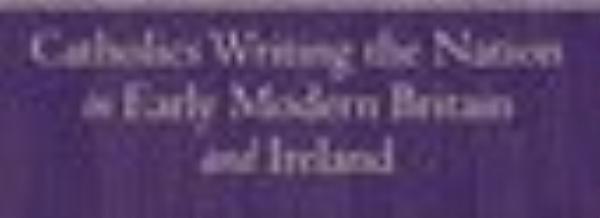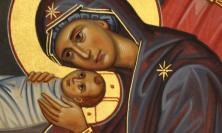Professor Highley deals with a topic which has increasingly become the subject of scholarly attention in recent years. Its importance arises from the consideration of what constitutes, despite the title of this work, English national identity. Linda Colley set the ball rolling with her highly acclaimed 1992 work Britons: Forging the Nation, 1707-1837. There Colley did look at formation of British national identity, predicated as it was on enmity with France and the Catholicism which was part and parcel of what made France French. Colley’s work dealt with the eighteenth century and since the appearance of Britons historians and literary critics have been anxious to trace the themes Colley explores for earlier decades and centuries.
Highley’s book has to be set against that of scholars such as Brendan Bradshaw and Peter Roberts, (eds) British Consciousness and Identity: the Making of Britain 1533-1707 (1998), and Susannah Brietz Monta’s Martyrdom and Literature in Early Modern England (2005), to name but two sets of research in what is quickly becoming a bewildering range of literature on the topic of religion and identity formation.
The present work is chronologically circumscribed by the marriage of Mary Tudor to Philip II of Spain and by the collapse in 1623 of the marriage negotiations between James I’s heir Charles and the Infanta Maria of Spain, daughter of Philip III. At the heart of the theoretical issues is a problem that would haunt English Catholic identity for the next four hundred years: is it possible simultaneously to be a good Catholic and a loyal Englishman?
The issue of loyalty to the English king, also became a problem for the Irish because Henry VIII, abandoning the medieval lordship, had himself declared king of Ireland. The Irish of their nature were considered disloyal and were written off as such by even the likes of Robert Persons S.J., although their Catholicism was rarely in doubt.
English Protestants were anxious to cast Catholics in the role of a community beholden to an alien religion which because of its associations with Southern Europeans, especially Spaniards, rendered its adherents non-English. The Catholics, at least those in exile, gave as good as they got and produced books and pamphlets demonstrating that it was the Protestants who had intruded the foreign element into English identity by embracing doctrines that had their origins in Wittenberg and Geneva. A good dose of xenophobia has long been important in what constitutes English self-identification. Furthermore Cardinal Pole had argued that there was no greater foreigner than Henry VIII, who had become a sort of Grand Turk, but without the latter’s religious toleration. This indeed became a general trope in Catholic and Protestant writings of the period as polemicists on each side tried to identify their opponents with the ‘godless Turk’. Thus for example William Rainold’s 1597 book of more than 1000 pages, translated by Persons, attempted to show what he took to be the clear similarities between the religion of the Turks and that of Calvin.
Catholics were also anxious to explore the conundrum that arose from the idea that the connection with Rome was alien to English religious identity: if this was true, how could one explain the coming of Christianity to ‘Britain’ as a specific act of Pope Gregory I? Hence the importance of Thomas Stapleton’s 1565 translation of Bede’s Ecclesiastical History of the English People, which one Elizabethan official described as “the most pestilential book ever published” (p. 85). Ironically Protestants also appealed to Bede to demonstrate the existence of an ancient Christianity independent of Rome, and thus an edition of Bede was printed at Basle in 1563.
Exile in continental Europe, especially in Flanders and Spain, could both enhance and dilute a sense of nationality. The English Catholic printing presses in Louvain, Douai, and Antwerp produced a stream of writing in English attempting to convince English Protestants of the complementarities of English and Catholic identity. At least until 1570 the literature was aimed at the English market, thereafter many of the products were in Latin and aimed at continental readers as the prospect of Catholic triumph in England receded.
There was division among the exiles with regard to questions of diluting national affiliation. The food and climate of Spain did not suit all the exiles; both were the subject of frequent complaints and the cause of the early deaths of many seminarians. There were complaints too from both Protestant and Catholic sources about the ‘Morisco nation’ of the Iberian Peninsula and the ‘hispaniolization’ of the English who went there.
This was part of a larger division among the exiles about the correct religious and political policies to follow in the home mission, and led to the breach between the Jesuits and the so-called ‘appellant’ priests, a conflict that would endure, despite the suppression of the Jesuits, well into the nineteenth century. Casting a shadow over these and so many issues of the English Catholic experience in the early modern period was, of course, the figure of Persons. In 1587 he had written to Cardinal Farnese in Rome, asking the Cardinal to join him in keeping their support for the designs of Philip II a secret from both the pope and Mary Queen of Scots. Persons was subsequently involved in writing and publishing the 1595 work A Conference about the Next Succession to the Crowne of Ingland, arguing for a Spanish succession and rejecting the claims of James I. When that monarchy did succeed in 1603 Persons immediately added a new dedication to his A Treatise of Three Conversions, praising James and describing him as a new Constantine.
This is a carefully measured and well reasoned work of unremitting scholarship which addresses all the issues alluded to above, and indeed many more. It is, however, much stronger in its exposition of the themes it pursues, than in its analysis. Highley gives no really satisfactory definition of nationality and hence of national identity in the various peoples whom he examines. The book rather limps to an end with an epilogue about the plight of the Bridgettines of Syon in their various exiles up to 1594. It lacks a systematic and synthetic conclusion and this lacuna rather detracts from the overall impression of solid scholarly enterprise.
This is not a work for the general reader or for the merely curious student of early modern England. It is a richly textured if densely written account of how English Catholics in exile sought to preserve their dual identity of Catholicity and Englishness.
The reviewer, Oliver Rafferty SJ, teaches at Heythrop College, London. His most recent book is: The Catholic Church and the Protestant State: Nineteenth Century Irish Realities (Dublin: Four Courts Press, 2008).
![]() Find this book on Oxford University Press's web site
Find this book on Oxford University Press's web site![]() The Catholic Church and the Protestant State by Oliver Rafferty SJ
The Catholic Church and the Protestant State by Oliver Rafferty SJ






